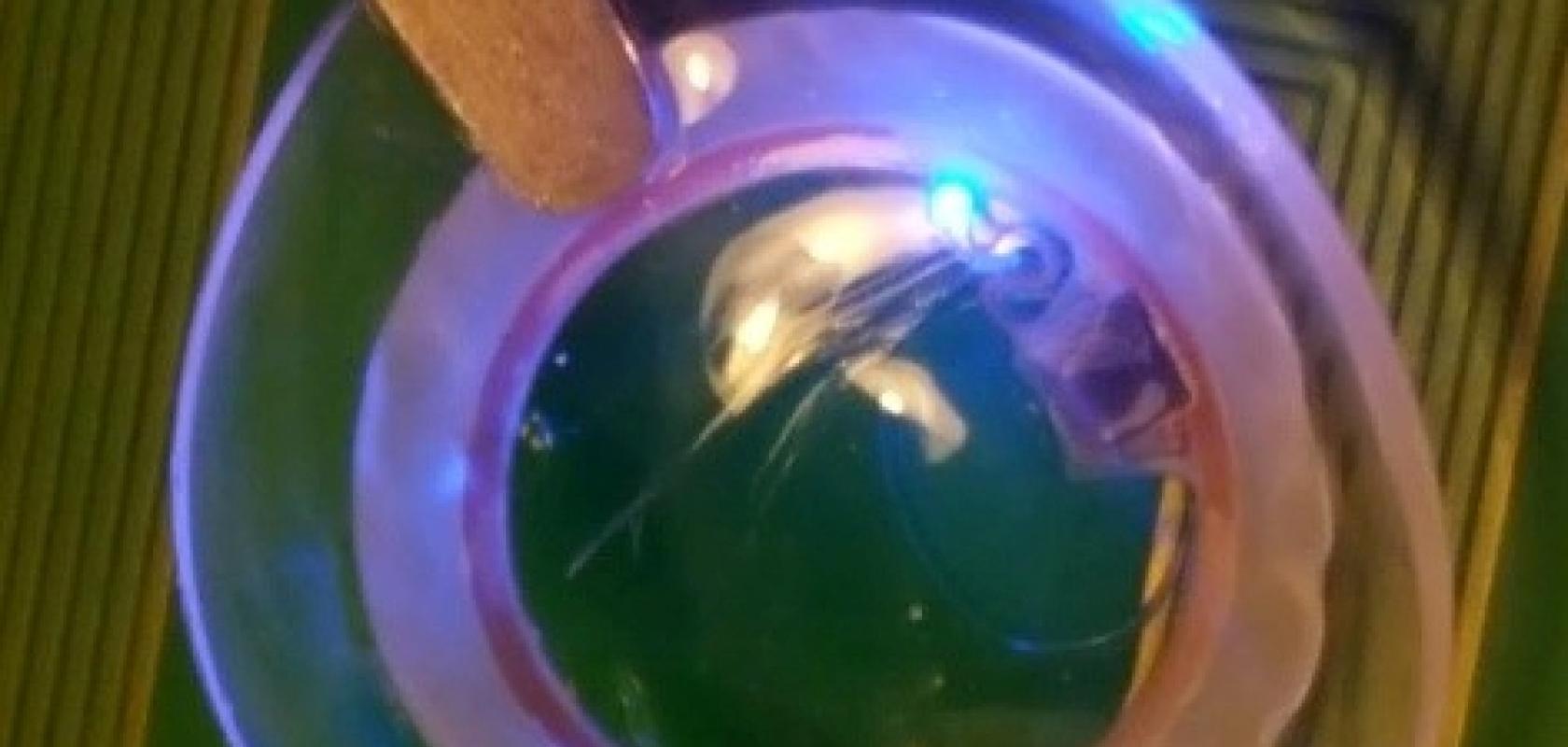Imec, Ghent University, and Japanese contact lens manufacturer Seed have built a contact lens with an integrated LED.
The work was announced at the Imec technology forum in Tokyo, Japan on 19 November.
The contact lens, made of a hydrogel-based material, includes an ultra-thin silicon microchip, radio‐frequency antenna for wireless energy transfer, and stretchable thin‐film interconnections.
The demonstration of electronics in hydrogel-based soft lenses opens the door to applications such as lenses with sensors, or drug-delivery systems for treating eye disorders.
About 130 million people worldwide wear contact lenses, mainly to correct their vision. With the possibility of having electrical power on-lens, it becomes feasible to integrate a variety of transducers into a lens. This is interesting for diagnosing and treating ocular diseases.
The challenge is to integrate a complete autonomous system and make it as flexible as a soft lens, without compromising its oxygen-permeable nature and the integrity of the electronics components.
CMST, an Imec research group at Ghent University, together with Seed, demonstrated a semi-passive smart lens with blue LED light powered by an RF coupling. Besides power transfer, the RF link can be used to calibrate the integrated transducers and read out the sensor data into a handheld device.
The interconnect substrate is based on thermoplastic polyurethane (TPU), a biocompatible material that is as flexible as a soft contact lens. Moreover, the viscoelastic nature of TPU allows planar structures to be thermoformed into spherical caps with a well‐defined curvature.
‘Flexible and stretchable electronics hold a lot of promise for medical applications,’ said Andrés Vásquez Quintero, Imec researcher and professor at UGent. ‘Major challenges have to be overcome to make a truly autonomous smart lens which is comfortable to wear and stable for a few days or even weeks. The integration of an LED light in a semi-passive RF wireless platform is the first important step towards a device that will change the life of many.’
Following steps will focus on developing active lenses with extended power autonomy in order to drive and read out the integrated transducers, and on the design of micro-transducers compatible with stretchable systems similar to the one presented in Japan.
According to Ms. Arai, a researcher at Seed, the device could be installed on the outer side (tear film side), the inner side (cornea side), or in the centre part of the contact lens.


